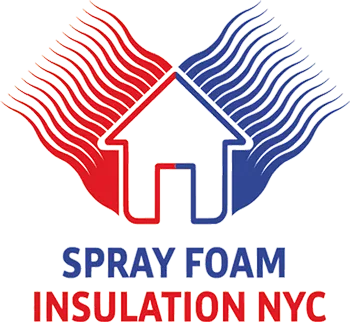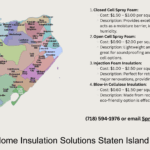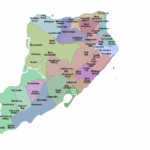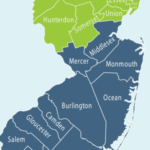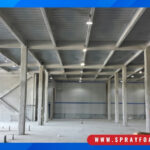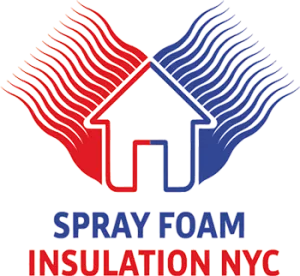Best Insulation for Existing Exterior Walls - old homes
Learn about spray foam & cellulose insulation for retrofitting exterior walls. NY, NJ, Long Island
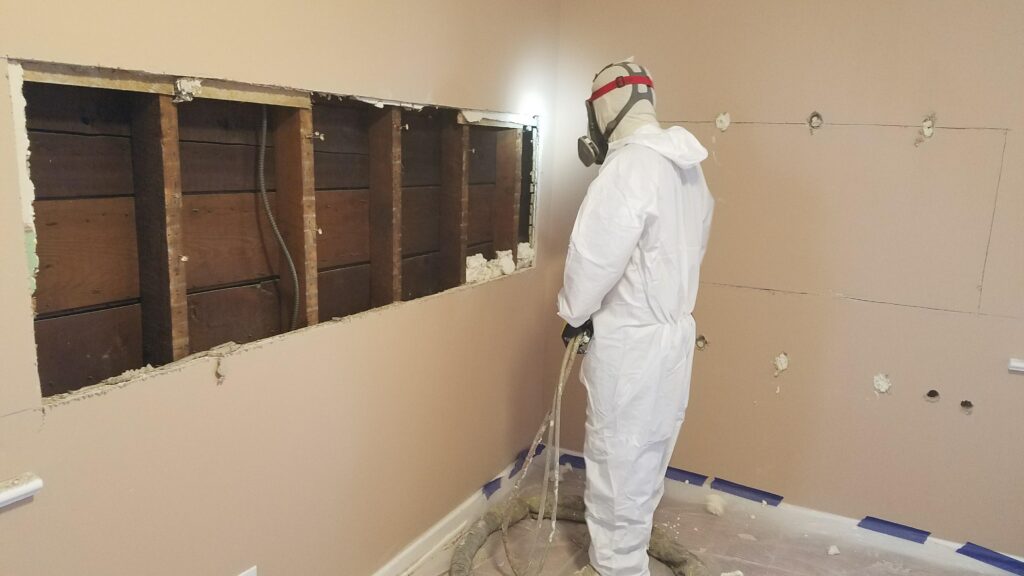
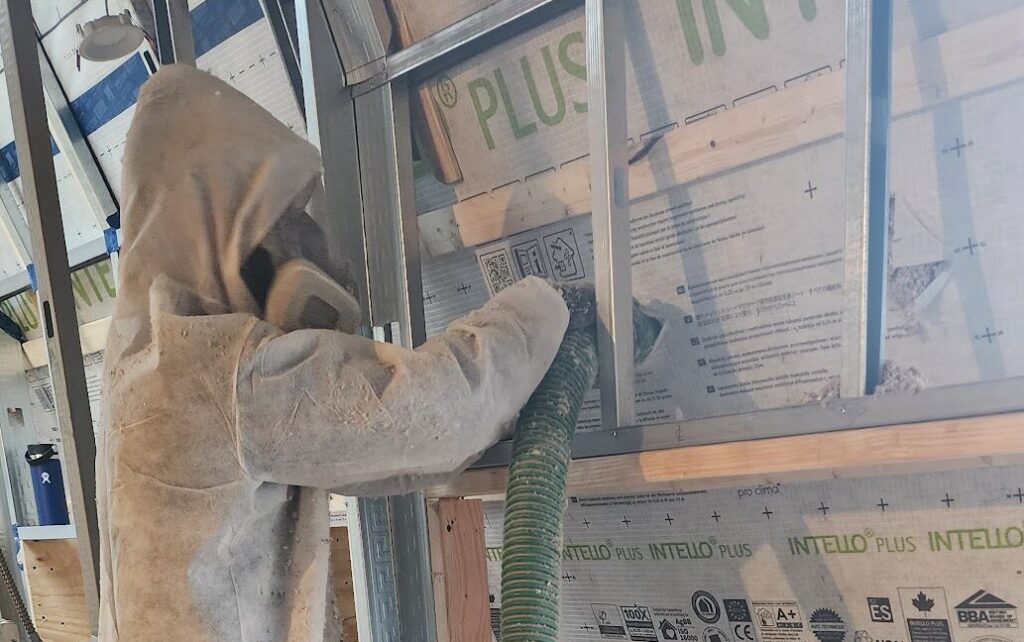
When you’re living in an older property, one of the most impactful upgrades you can make is improving the insulation of your exterior walls. Proper insulation not only enhances the energy efficiency of your home but also makes it more comfortable to live in, reduces noise, and contributes to a greener planet.
Want to know the best insulation options for your old house’s walls? We’ll guide you through your top choices—spray foam insulation and cellulose insulation—alongside the benefits, costs, and installation processes. By the time you’re done reading, you’ll understand exactly why insulating your home is a smart investment for both your wallet and the environment.
Types of Insulation for Existing Exterior Walls
Choosing the right insulation depends on your home’s needs, budget, and long-term objectives. Two leading options stand out for retrofitting existing walls.
1. Spray Foam Insulation
Spray foam is one of the most versatile insulation solutions available. It starts as a liquid that expands to fill wall cavities, creating an airtight seal and an impressive barrier against drafts and moisture.
Benefits of Spray Foam Insulation:
- High R-Value: Offers exceptional thermal resistance, reducing heat loss in winter and heat gain in summer.
- Air Barrier: Prevents drafts, promoting stable indoor temperatures.
- Durable Material: Hardens into a solid form, requiring little-to-no future maintenance.
- Improved Air Quality: Reduces allergens and moisture, making indoor air healthier.
Cost Insight: Spray foam has a higher upfront cost compared to cellulose, but its durability means you won’t need future replacements or maintenance, making it a cost-effective solution in the long term.
2. Cellulose Insulation
For environmentally-conscious homeowners, cellulose insulation is an eco-friendly option made from recycled paper products, treated to resist pests and fire.
Benefits of Cellulose Insulation:
- Eco-Friendly: Crafted from recycled materials, making it an ethical choice.
- Soundproofing: Effective at reducing noise, improving peace and quiet.
- Energy Efficient: Reduces air leaks, cutting down heating and cooling bills.
- Affordable: Generally more cost-effective than spray foam.
Cost Insight: While cellulose is more affordable upfront, it may require occasional replacement or maintenance over time to maintain its effectiveness.
Both insulation options have their merits, but your choice will depend on your priorities—whether they lean towards convenience, cost, or eco-friendliness.
Process of Insulating Existing Walls
Insulating existing walls may sound like a major project, but professional contractors make the process efficient and non-invasive. Here’s how it typically works:
- Assessment: An experienced contractor evaluates your home’s walls to determine the best insulation option. They’ll check for existing materials, thermal leaks, and wall accessibility.
- Drilling: Small holes are drilled into the wall studs, either from the exterior or interior of the property. For older homes, this step ensures that insulation reaches even hard-to-reach cavities.
- Injecting/Blowing Insulation: Using specialized machinery, spray foam or cellulose insulation is inserted into the wall cavities. The material fills the empty spaces, adhering tightly to every nook and cranny.
- Patching: Once the insulation has been applied, the drilled holes are sealed, and your walls are restored to their original condition.
- Clean-Up: Professionals will clean the site and ensure the insulation is functioning as intended.
Timeline: Most residential projects can be completed within a day or two, depending on the size of the property.
Hiring professional contractors ensures proper installation, avoiding pitfalls like overfilling or uneven application.
Why Insulate Existing Exterior Walls?
Still undecided about whether it’s worth insulating your exterior walls? Here’s what you stand to gain:
1. Improved Energy Efficiency
Proper insulation significantly lowers heating and cooling costs by stabilizing indoor temperatures. Homeowners can save up to 15% on energy bills annually by minimizing thermal loss.
2. Enhanced Comfort
Tired of drafty rooms during winter? Or stifling heat in the summer? Insulated walls regulate indoor temperatures, ensuring comfort year-round.
3. Noise Reduction
Both spray foam and cellulose act as effective sound barriers, keeping outdoor noise from infiltrating your living spaces and reducing sound transmission between rooms.
4. Environmental Impact
Better insulation reduces energy consumption, lowering your home’s overall carbon footprint. For environmentally-conscious homeowners, insulating is a tangible way to contribute to sustainability.
5. Increased Property Value
Energy-efficient upgrades can boost the resale value of your home. Potential buyers love seeing eco-friendly improvements that also help reduce long-term costs.
By insulating, you’re not just paying for current comfort—you’re investing in a long-term solution with a multitude of benefits.
Real-Life Success Stories
Case Study 1: The Johnsons in Queens, NY
The Johnsons own a two-story colonial house that was plagued with high energy bills and drafty rooms. After opting for spray foam insulation, they saw an immediate drop in heating and cooling costs. “Our house finally feels warm all winter and cool during the summer,” they said. “Plus, the outside noise reduction has been remarkable.”
Testimonial from the Rodriguez Family in Staten Island
“We hired Spray Foam Insulation NYC to retrofit our 1920s home. The team was incredibly professional, and the results have been beyond our expectations. We’d recommend their services to anyone seeking energy savings!”
Case Study 2: A Brooklyn Office Building
A commercial property in Brooklyn faced skyrocketing energy costs. After cellulose insulation was blown into the walls, energy consumption dropped by 30%, and tenants reported more comfortable working conditions with less noise between floors.
These case studies illustrate that regardless of property type, proper insulation creates noticeable improvements.
Service Areas We Cover
Spray Foam Insulation NYC is proud to serve homeowners, builders, and property managers across the following areas:
- Brooklyn
- Queens
- Manhattan
- Staten Island
- The Bronx
- Long Island
- New Jersey
If you’re located in these regions, our team is ready to help transform your property with top-tier insulation solutions.
Take Charge of Your Comfort and Energy Efficiency
An old house doesn’t have to feel drafty, noisy, or inefficient. By upgrading the insulation in your existing exterior walls, you can enjoy a host of benefits—from improved comfort to meaningful reductions in energy costs.
Want to make the change today? Contact Spray Foam Insulation NYC for a consultation and find out which insulation option best fits your needs. We’re here to make your home or property the best it can be—efficient, comfortable, and eco-friendly.
Best Insulation for Existing Exterior Walls | Spray Foam NYC
Best Insulation for Existing Exterior Walls for old homes. Learn about spray foam & cellulose insulation for retrofitting exterior walls. NY, NJ, Long Island
